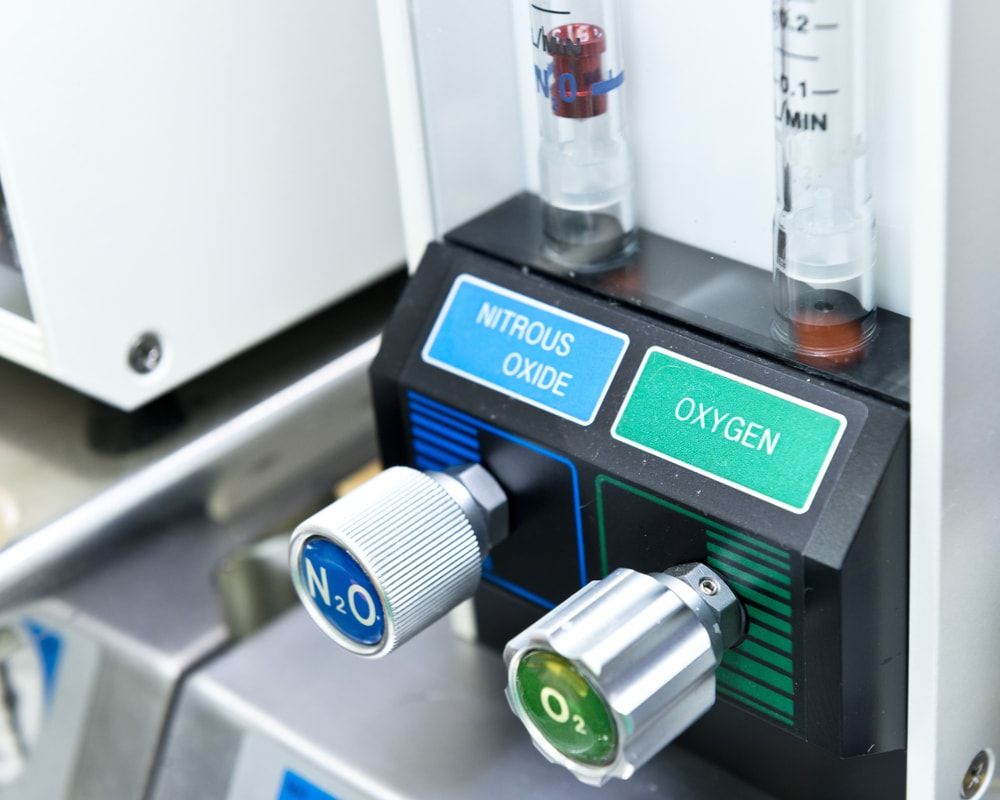How Does Nitrous Oxide Work?

Nitrous oxide, or laughing gas, is a commonly used dental sedation method. In fact, it is probably one of the most popular methods. Like all sedation methods, nitrous oxide helps to reduce anxiety for the patient while undergoing dental procedures. But, what exactly is nitrous oxide and how does it work to reduce anxiety during dental procedures?
Nitrous oxide is a colorless and odorless chemical compound made up of two molecules of nitrogen and one molecule of oxygen. Although it is odorless, some patients have reported nitrous oxide to have a slightly metallic taste, while others describe this taste as being somewhat sweet
This gas was first synthesized in 1722, but it was not popularized for dental use until 1844. In 1844, Horace Wells used nitrous oxide during a tooth extraction to demonstrate an insensitivity to pain. After that demonstration, nitrous oxide became used as a medical anesthetic.
When used by dentists, nitrous oxide is administered through a nasal hood that covers the patient’s nose. The patient will receive both oxygen and nitrous oxide during a procedure, although the combination of the two gases will be dependent on the desired strength of the sedation. Once the gas is turned on, the patient will simply inhale through their nose and exhale through their mouth to receive the gas. After the first breath of nitrous oxide, it only takes twenty seconds to reach the brain and an additional two to three minutes to being inhibiting pain receptors.
The exact functioning mechanism of nitrous oxide is currently unclear. It is believed that nitrous oxide works through regulated ligand-gated ion channels in the body. These ligand-gated ion channels are made up of transmembrane ion-channel proteins, that open to allow ions such as Na+ (Sodium), K+ (Potassium), Ca2+ (Calcium), and Cl (Chlorine) to pass through the membrane in response to the binding of a ligand (chemical messenger), such as a neurotransmitter. In simple terms, this means that ligand channels affect how neurotransmitters send pain signals through the body.
Nitrous oxide affects the body in ways. First,GABAA receptors block neurotransmitters which causes an anti-anxiety effect. Second, nitrous oxide causes the brain to release norepinephrine which inhibits pain signaling throughout the body. And finally, nitrous oxide increases stimulation to the pathway in the brain responsible for releasing dopamine, causing feelings of euphoria.
Patients experience different reactions to nitrous oxide depending on how much of the gas they receive. Most patients report feeling light-headed, tingly in the arms and legs, warm, euphoric, and sleepy. Some patients also report feeling a vibrating or floating sensation. If too much gas is given, some patients report feeling slightly dizzy. This is easily remedied by decreasing the nitrous oxide levels and increasing the oxygen levels.
Once the procedure has been completed, the nitrous oxide valve is turned off and the patient will continue to receive oxygen only. This increased flow of oxygen will work to flush out any of the nitrous oxide that remains in the lungs or airway. As the nitrous oxide writing papers is flushed out, the patient will return to their normal state. Generally speaking, once a patient has recovered they are usually able to eat and drive with no problems. However, individual cases must consult with their dentists before doing either since nitrous oxide can potentially affect appetite and the ability to drive.

